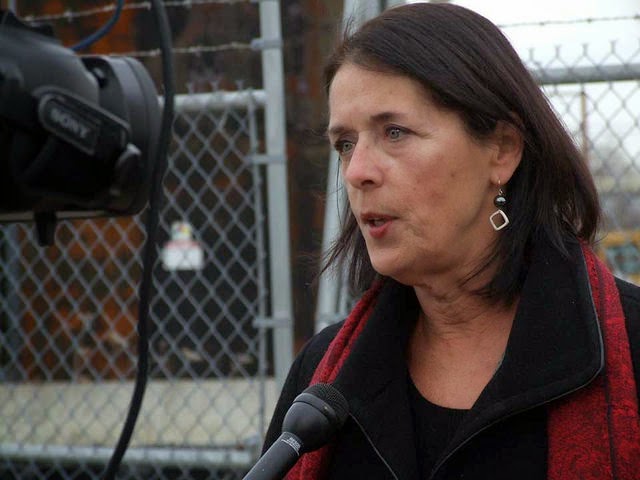Activist Group Not Deterred by Ballot and Court Defeats for Home Rule
 |
| Lois Gibbs |
The female activist from the Love Canal neighborhood of Niagara Falls, N.Y., stood before the Northstar 1 injection well Friday afternoon to warn residents of Youngstown about the dangers to their health open injection wells pose.
Lois Gibbs, the activist who, in the 1970s, led the Love Canal community against the Hooker Chemical Co. (since acquired by Occidental Petroleum Corp.), and the New York state and federal governments, warned Youngstown residents of the dangers of open injection wells.
What happened in her community nearly 40 years ago could happen here, she said. The board of education in Niagara Falls bought the abandoned Love Canal that Hooker Chemical had used as a dump to bury toxic waste, Hooker not knowing just how toxic it was. Nor did the school board when it paid Hooker $1 for the site to build a school.Read more of that article by clicking here.
Industry site Energy in Depth had plenty to say in response to Gibbs' statements in Youngstown:
The group invited New York activist Lois Gibbs to speak in Youngstown in front of the Northstar 1 injection well. To her credit, Ms. Gibbs at least admitted her true intentions in coming to Youngstown. According to the Youngstown Business Journal, she said, “The area’s economy should not involve fracking in any capacity.”
Yet, even with this clear acknowledgment, it’s worth taking a look at some of her claims at the event (as well as the claims of Frackfree Mahoning Valley) and providing the facts:
Gibbs claim: “‘Let’s not take radioactive material and put it on this land. This all goes into the aquifer and into people’s water.’ With the well unplugged, she said, rain, melting snow and runoff can mix with the residue and contaminate the aquifer underground.”
Fact: In suggesting that the Northstar 1 well is putting water at risk, Ms. Gibbs’ claim goes directly against what the Environmental Protection Agency (EPA) has determined.
In a recent report, EPA found:You can read more of that article by clicking here.“There are approximately 30,000 Class II active disposal wells in the United States used to dispose of oil and gas related wastes, many of which have operated for decades. EPA is unaware of any USDW contamination resulting from seismic events related to injection-induced seismicity. (emphasis added)As EID has noted on several occasions, the state of Ohio has some of the most stringent regulations on Class II injection wells, even surpassing those of the U.S. EPA. Further, the U. S. Government Accountability Office (GAO) released a report last year, which found that states “have safeguards in their programs that EPA has deemed protective of underground sources of drinking water.”
Connect with us on Facebook and Twitter!
Follow @EnergyNewsBlog


